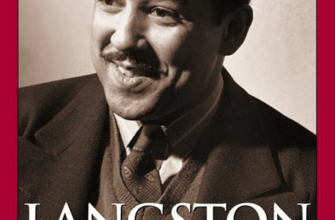In the vast realm of literature, there are few authors whose works continue to captivate readers even after decades and resonate with a timeless appeal. This article delves into the profound impact left by a literary luminary, a veritable maestro of storytelling. By traversing the pages of history, we navigate the deeply intricate labyrinth of words crafted by a figure hailed as a visionary wordsmith, whose name invokes reverence in the hearts of readers and writers alike.
Within the realm of literature, it is a rare phenomenon to encounter a storyteller whose talent transcends the limitations of time. The brilliance of this intrepid author’s narratives lies not only in his exquisite prose but also in his ability to craft tales that explore the depths of the human condition. In an era where literary voices often fade into obscurity, this unparalleled storyteller's tales persist, defying the passage of time to leave an indelible mark on generations of avid readers.
The literary prowess of this revered author knows no bounds. Through the pages of his eloquent works, his words dance and sing, painting vivid portraits in the minds of readers. His resolute devotion to his craft, coupled with an unparalleled imagination, enables him to conjure worlds that transport readers into the realms of the extraordinary. This visionary writer masters the art of weaving together intricate and multi-dimensional characters, fostering a connection between their inner worlds and the readers' own experiences.
The Literary Influences That Shaped William Faulkner's Unique Narrative Style

In the vast tapestry of literature, every author finds inspiration from a myriad of sources, weaving together a distinct writing style that reflects their individuality. In the case of William Faulkner, renowned for his unparalleled storytelling prowess, his literary influences played a crucial role in shaping his distinctive narrative voice.
Faulkner's writing style exhibits traces of his exposure to the southern gothic tradition, with its emphasis on dark, grotesque themes and the exploration of the human psyche. Furthermore, his style reveals shades of modernism, a literary movement that challenged traditional narrative structures and experimented with unconventional techniques. Faulkner's immersion in these influences enabled him to craft narratives that possess a remarkable depth and complexity.
Another significant influence on Faulkner's writing style lies in his deep appreciation for the works of authors such as James Joyce and Virginia Woolf. Their pioneering use of stream-of-consciousness narrative technique, capturing the inner thoughts and emotions of characters in a continuous flow, resonated with Faulkner's artistic sensibilities. He adeptly incorporated this technique into his own narratives, enabling readers to immerse themselves in the minds of his characters and experience the intensity of their struggles.
Moreover, Faulkner's exposure to classical literature, particularly to the ancient Greek tragedies, left an indelible imprint on his writing style. The timeless themes of fate and the destructive nature of human hubris found in works like Sophocles' "Oedipus Rex" influenced Faulkner's exploration of characters trapped in a relentless cycle of self-destruction. The tragic undertones that pervade his novels reflect his deep-rooted admiration for the classics.
Lastly, Faulkner's own experiences growing up in the American South, with its rich history and complex social dynamics, served as a source of inspiration for his writing style. The region's distinct dialects, cultural traditions, and racial tensions found their way into the fabric of his narratives, creating a vivid and authentic portrayal of the Southern experience.
In conclusion, the influences on William Faulkner's writing style were as diverse as the mosaic of themes and narratives found within his iconic works. From the southern gothic tradition to modernist experimentation, from the stream-of-consciousness technique to the echoes of classical literature, Faulkner's literary influences shaped his unique and captivating storytelling approach, cementing his status as a masterful wordsmith.
Literary, Historical, and Personal Influences on Faulkner's Unique Storytelling Approach
In this section, we will delve into the various factors that influenced and shaped William Faulkner's distinctive approach to storytelling. By examining the literary, historical, and personal influences on his works, we can gain a deeper understanding of the themes, narrative styles, and character development found within his novels and short stories.
One important factor that shaped Faulkner's storytelling was his exposure to a wide range of literary influences. Drawing inspiration from both classic and contemporary literature, Faulkner honed his craft by studying the works of renowned authors such as Mark Twain, Virginia Woolf, and Ernest Hemingway. The influence of these literary giants is evident in Faulkner's experimentation with narrative structure, intricate characterizations, and exploration of complex themes.
Furthermore, Faulkner's storytelling approach was heavily influenced by the historical context in which he lived. Growing up in the American South during a time of great social and political upheaval, Faulkner witnessed firsthand the effects of slavery, racial tensions, and the decline of the agrarian way of life. These experiences deeply impacted his portrayal of Southern society and provided the backdrop for many of his most famous works, including "The Sound and the Fury" and "Absalom, Absalom!"
On a more personal level, Faulkner's own life experiences and family history played a significant role in shaping his unique storytelling perspective. Coming from a family with a rich oral tradition, Faulkner was exposed to captivating stories and narratives from a young age. This oral tradition, combined with his own personal struggles and observations, contributed to his ability to create memorable and complex characters, as well as his exploration of themes such as the nature of time, memory, and the human condition.
| Literary Influences | Historical Context | Personal Experiences |
|---|---|---|
| Mark Twain | Slavery and racial tensions | Family oral tradition |
| Virginia Woolf | Southern society in decline | Personal struggles and observations |
| Ernest Hemingway | Political upheaval |
The Captivating Southern Setting in Faulkner's Novels

In the works of the esteemed American author William Faulkner, the serene yet haunting ambiance of the Deep South emerges as a compelling character in its own right. Faulkner skillfully depicts the rich tapestry of the Southern landscape, weaving its unique features into the fabric of his narratives. Through his vivid descriptions and keen observations, he transports readers to a world both intriguing and mysterious, where magnolias gently perfume the air and whispering willows seem to harbor secrets.
Immersing readers into the heart of his stories, Faulkner masterfully uses the Southern setting to enhance the depth and complexity of his characters and their experiences. The lushness and beauty of the region provide a stark contrast to the turmoil and struggles faced by his protagonists, allowing for a deeper exploration of their inner conflicts. By grounding his tales in a distinct sense of place, Faulkner crafts a narrative landscape that mirrors the complexities of human emotions and the complexities of the Deep South itself.
Through the Southern setting, Faulkner exposes the cultural and societal dynamics that shape his characters. The plantation houses with their grand facades and shaded porches serve as a reminder of the genteel aristocracy that once thrived, while the dilapidated sharecropper shacks represent the hardships faced by those on the fringes of society. In this backdrop of social inequality, Faulkner deftly explores themes of race, class, and the fading traditions of the South, illuminating the tumultuous history of the region.
Moreover, Faulkner's use of the Southern setting adds a layer of symbolism and metaphor, inviting readers to delve deeper into the subtext of his works. Through the sweltering heat, dripping Spanish moss, and endless fields of cotton, Faulkner conveys the stifling nature of the past and its lingering hold on the present. The South becomes a metaphor for the weight of history and the struggle of individuals to break free from its grasp, capturing the essence of Faulkner's exploration of the human condition.
In conclusion, William Faulkner ingeniously employs the backdrop of the Deep South to enrich his storytelling, creating a captivating blend of history, culture, and emotion. The Southern setting allows for a nuanced understanding of his characters and their motivations, while also serving as a powerful metaphor for the larger themes at play in his works. Faulkner's masterful portrayal of the Deep South lingers in the minds of readers, reminding us of the enduring legacy of this literary maestro.
An exploration of Faulkner's representation of the Southern region: A reflection of its rich history, distinct culture, and complex social dynamics
In this section, we delve into how William Faulkner masterfully captures the essence of the South in his literary works, showcasing the region's multifaceted history, unique cultural identity, and intricate social interactions. Through his vivid storytelling and nuanced character portrayals, Faulkner provides a window into the complex tapestry of the Southern experience.
Historical Significance: Faulkner's exploration of the South delves into its rich historical legacy, shedding light on pivotal moments and themes that have shaped the region. From the aftermath of the Civil War to the era of Jim Crow laws, Faulkner's narratives illuminate the lasting impact of these historical events on the inhabitants of the South. | Cultural Identity: Faulkner's portrayal of the South highlights its distinct cultural identity, influenced by factors such as geography, traditions, language, and religion. Through his characters and settings, he captures the intricacies of Southern life, showcasing the region's unique customs, folk traditions, and the interplay between the old and new in the face of societal changes. |
Social Dynamics: In examining Faulkner's works, we explore the complex social dynamics prevalent in the Southern region. He skillfully depicts the intricate web of relationships, power dynamics, and class divisions that define Southern society. From the aristocratic families to the marginalized groups, Faulkner offers a nuanced portrayal of the diverse social strata that exist within the South. | Representation of Struggles: Through his characters' struggles, Faulkner provides insights into the challenges faced by individuals within the Southern community. Whether it is the burdens of the past, racial tensions, or the clash between tradition and progress, Faulkner's narratives shed light on the complexities and conflicts that define the Southern experience. |
By examining Faulkner's portrayal of the South, we gain a deeper understanding of its history, culture, and social dynamics. His masterful storytelling serves as a powerful tool for exploring and unraveling the intricate tapestry of the Southern region, showcasing both its beauty and its challenges.
Faulkner's Exploration of Themes of Race and Civil Rights

Faulkner delves into the intricate fabric of society, unraveling the complexities surrounding race and advocating for civil rights through his timeless works. He fearlessly examines the racial tensions and inequalities embedded in the American South, shedding light on the struggles faced by individuals of different ethnic backgrounds without resorting to clichéd descriptions. Faulkner's literary prowess enables him to skillfully navigate the nuances of race and civil rights, crafting narratives that challenge societal norms and offer profound insights into the human condition.
An analysis of Faulkner's exploration of racial issues and the changing civil rights movement in his literary works
In his novels and short stories, the renowned American author William Faulkner delved into the complexities of race relations and grappled with the evolving civil rights movement of his time. Through his writing, Faulkner examined the racial tensions of the Deep South, offering profound insights into the social and political climate surrounding African Americans.
Throughout his career, Faulkner portrayed the multifaceted experiences of African Americans with nuance and sensitivity. He explored the systemic racism ingrained in society, shedding light on the inherent injustices faced by individuals of color. Faulkner's works addressed themes of discrimination, inequality, and the impact of racial prejudice on the lives of African Americans.
As the civil rights movement gained momentum during the mid-20th century, Faulkner's fiction reflected the changing dynamics of race relations. His characters often grappled with the realities of segregation and the fight for equality. Moreover, Faulkner explored the internal struggles of African Americans who sought to challenge the oppressive societal norms of their time.
Through his depiction of racial tensions, Faulkner highlighted the complexities and contradictions of the human experience, inviting readers to confront the injustices of the era. His portrayal of the evolving civil rights movement in his works serves as a testament to his keen observation of societal shifts and his ability to translate them into thought-provoking narratives.
In conclusion, Faulkner's exploration of racial issues and the changing civil rights movement in his literary works provides a significant contribution to the understanding of American history and social progress. His nuanced portrayals offer profound insights into the challenges faced by African Americans, and his writings serve as a valuable chronicle of the time period and the struggles for equality.
Faulkner's Exploration of Narrative Techniques and Perspectives

In this section, we will delve into the distinctive ways in which Faulkner weaves intricate narratives and utilizes diverse perspectives to captivate his readers. Through his masterful storytelling, Faulkner skillfully employs various techniques and viewpoints to bring his stories to life.
Narrative Techniques:
Faulkner's narrative techniques are not just mere tools; they are the backbone of his storytelling. Whether it's the use of stream-of-consciousness, nonlinear storytelling, or multiple perspectives, Faulkner creates a rich and multifaceted narrative tapestry. By employing these techniques, he takes readers on a journey that is both thought-provoking and innovative.
Perspectives:
One of the defining features of Faulkner's works is his adeptness at presenting stories from diverse perspectives. From the first-person narratives that intimately draw readers into the minds of his characters to the multi-perspective narratives that offer a comprehensive understanding of events, Faulkner showcases his mastery in crafting unique and compelling viewpoints. Through these various perspectives, Faulkner challenges readers to consider different angles and interpretations, expanding their understanding of the human experience.
In conclusion, Faulkner's use of narrative techniques and perspectives sets him apart as a master storyteller. His ability to create intricate narratives and adopt diverse viewpoints enriches his works, making them timeless and engaging for readers. By exploring these aspects of his writing, we can delve deeper into the brilliance of Faulkner's storytelling legacy.
FAQ
What is the legacy of William Faulkner?
The legacy of William Faulkner is that of a master storyteller whose works continue to captivate readers with their complex themes, deep characters, and vivid settings. He is considered one of the greatest American writers of the 20th century.
What are some of William Faulkner's most famous works?
Some of William Faulkner's most famous works include "The Sound and the Fury," "As I Lay Dying," "Absalom, Absalom!," and "Light in August." These novels are widely studied and celebrated for their innovative narrative techniques and exploration of the human condition.
How did William Faulkner's writing style contribute to his success?
William Faulkner's unique writing style, characterized by its stream-of-consciousness narrative, multiple perspectives, and experimental structure, contributed to his success by pushing the boundaries of traditional storytelling. His innovative approach challenged readers and forced them to engage with his texts on a deeper level.
Why is William Faulkner considered a master storyteller?
William Faulkner is considered a master storyteller because of his ability to create complex characters, build intricate narratives, and explore profound themes such as race, morality, and the decline of the South. His works are known for their deep psychological insights and lyrical prose.
How has William Faulkner's work influenced contemporary literature?
William Faulkner's work has had a significant influence on contemporary literature. His narrative techniques and thematic explorations have inspired countless writers to push the boundaries of traditional storytelling. His examination of the complexities of human nature and societal issues continues to resonate with modern readers.
What is the article about?
The article is about exploring the legacy of William Faulkner, who is known as a master storyteller.
Who is William Faulkner?
William Faulkner was an American writer and Nobel Prize laureate who lived from 1897 to 1962. He is highly regarded for his novels and short stories that depict the complexities of the American South.



